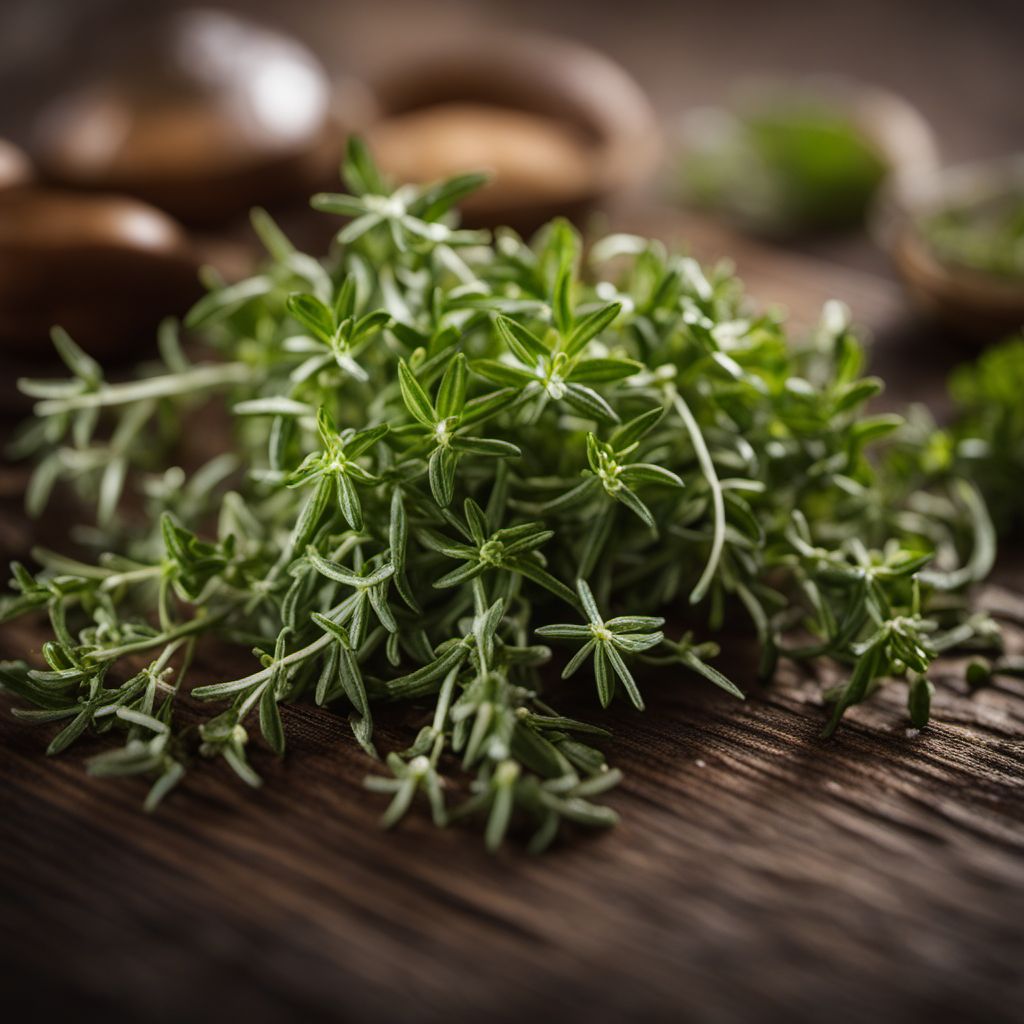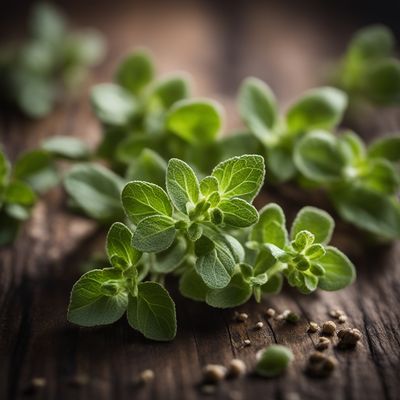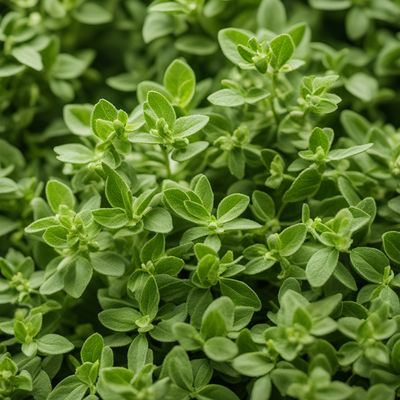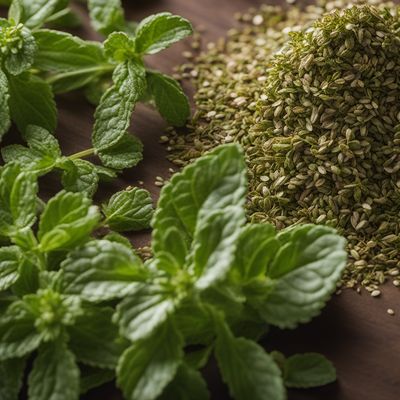
Ingredient
Thyme and similar-
The Aromatic Herb: Thyme and Its Cousins
Thyme and similar herbs, including oregano, rosemary, and sage, are small, woody-stemmed plants with fragrant leaves. They have a distinct earthy and slightly minty flavor, with hints of lemon and pine. The leaves are small and delicate, offering a subtle crunch when used fresh or a more intense flavor when dried.
Origins and history
Thyme has been used in culinary and medicinal practices for centuries. It originated in the Mediterranean region and has been cultivated since ancient times. Oregano, rosemary, and sage also have their roots in the Mediterranean and have been valued for their culinary and medicinal properties throughout history.
Nutritional information
Thyme and similar herbs are low in calories and rich in essential oils, antioxidants, and vitamins. They provide a good source of vitamin C, vitamin A, iron, and manganese.
Allergens
There are no known allergens associated with thyme and similar herbs.
How to select
When selecting thyme and similar herbs, look for fresh, vibrant leaves that are free from wilting or discoloration. The leaves should have a strong aroma when gently crushed. If purchasing dried herbs, ensure they are stored in airtight containers and have not lost their potency.
Storage recommendations
To maintain the freshness of thyme and similar herbs, store them in a plastic bag or airtight container in the refrigerator. Alternatively, you can preserve them by drying the leaves and storing them in a cool, dark place.
How to produce
Thyme and similar herbs can be easily grown in home gardens or pots. They thrive in well-drained soil and require full sun exposure. Regular pruning will promote bushier growth and ensure a continuous supply of fresh leaves.
Preparation tips
Thyme and similar herbs are versatile ingredients that can be used in a variety of dishes. They are commonly used in Mediterranean, Italian, and French cuisines. Add them to soups, stews, marinades, roasted meats, vegetables, and sauces for an aromatic and flavorful touch.
Substitutions
Oregano, rosemary, and sage can be used as suitable substitutes for thyme. However, keep in mind that each herb has its unique flavor profile, so adjust the quantities accordingly.
Culinary uses
Thyme and similar herbs are widely used in culinary applications. They are commonly found in dishes like roasted chicken, tomato-based sauces, grilled vegetables, and herb-infused oils and vinegars.
Availability
Thyme and similar herbs are commonly available in Mediterranean countries, such as Greece, Italy, and France. They are also cultivated in other regions with suitable climates, including North America and parts of Asia.
More ingredients from this category

Mastic thyme
The Fragrant Herb: Unveiling the Aromatic Delights of Mastic Thyme

Lemon thyme
The Zesty Herb

Marjoram
The Fragrant Herb: Marjoram

Creeping thyme
The Fragrant Delight of Creeping Thyme

Oregano
The Herb of Mediterranean Delights

Summer savory
"The Herb of Warmth and Flavor"

Cretan oregano
The Fragrant Herb of the Mediterranean

Lemon savory
The Zesty Herb: Lemon Savory and its Citrusy Twist

Syrian oregano
The Exotic Herb: Syrian Oregano

Winter savory
Savoring the Season: Exploring the Delights of Winter Savory

Thyme
The Fragrant Herb: Thyme